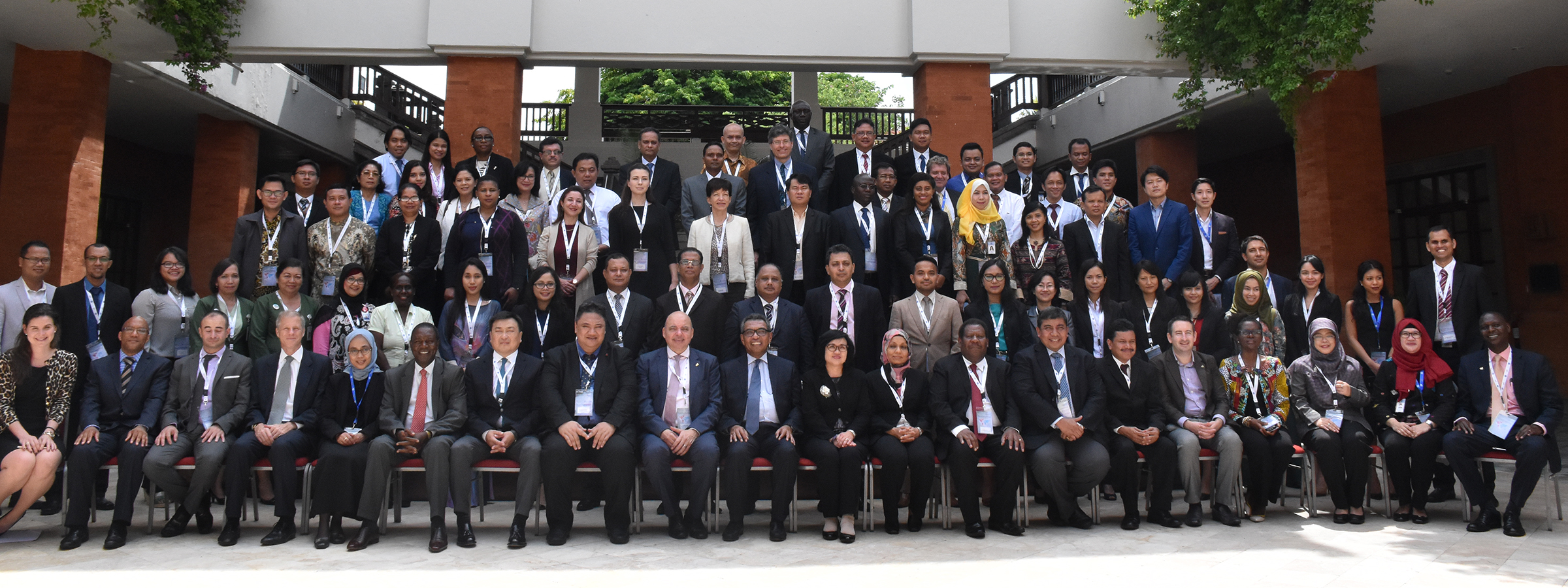
16 December 2016
Bali conference: Financial inclusion strengthens financial stability
More than 100 participants across 30 countries from AFI members and partner organizations participated in the global conference “Maximizing the power of financial access: finding an optimal balance between financial inclusion and financial stability” held in Bali, Indonesia, on 30 November – 1 December. The conference was co-hosted by Bank Indonesia and AFI with the participation of AFI member and partners including: the International Monetary Fund (IMF); the World Bank Group, the Financial Stability Board, the South East Asian Central Banks Research and Training Centre (SEACEN), and academic institutions.
As set out by AFI Executive Director Dr Alfred Hannig in his opening remarks, the organization of the conference recognized that “the link between financial inclusion and financial stability is an important topic that is guaranteed to keep policymakers busy over upcoming decades”, noting that financial inclusion can indeed enhance stability of the system provided it is pursued “in a responsible way that can help to drive growth but at the same time keep associated risks in check”. Therefore, Dr. Hannig concluded “we want to be risk aware on promoting financial inclusion but not risk averse”.
Deputy Governor of Bank Indonesia Ronald Waas in his keynote address set out Bank Indonesia’s view that financial inclusion has more benefits that costs for financial stability since “it reduces shadow banking and supports financial market depth and provides banks with potential new markets, as well as contributing to national economic growth”. Key to achieving an optimal balance between inclusion and stability, according to Mr Waas, was effective financial literacy and consumer protection initiatives to ensure the poor are able to engage with formal financial services “without causing any negative ramifications”.
Subsequent panel sessions on the first day of the conference addressed the research evidence on the linkages between Financial Inclusion and Financial Stability; the relationship between Digital Financial Services and Financial Stability; the importance of achieving a proportionate regulatory and supervisory approach when implementing global financial stability standards; and finally the impact of de-risking on both financial stability and financial inclusion. Conference participants concurred that Financial Inclusion should be seen as an opportunity to strengthen financial stability in many countries, since as noted by Mr. Ananthakrishnan Prasad of the IMF, “so far there is not yet any substantial evidence that financial stability is significantly threatened by wider outreach of financial inclusion”, though the IMF’s research had highlighted the need for expanded provision of credit to be accompanied by high quality supervision to avoid potential adverse impacts on system stability.
Participants also highlighted that new digital financial services require us to look afresh at the both opportunities and risks. As pointed out by Mr. Ghiyazuddin Mohammad of Microsave, “financial services are increasingly technologically driven, but some of the tools are getting more exposed to hackers or other cyber risks”, therefore consumer protection “is an essential requirement for political and financial stability”. Regulators will have a critical role in managing these new risks, and consequently as highlighted by Ms. Rochelle Tomas of the Banko Sentral ng Pilipinas “inter-regulator coordination is also important for information sharing, clear delineation of responsibilities to prevent regulator overlap, as well as for ensuring policy and supervisory consistency… we need to keep pace with rapid market innovation and look for unintended macroeconomic and social consequences”.
The Second day of the conference included sessions on “Innovative Lending for SME Credit: Benefit and Risks to Financial Stability” and “Consumer Empowerment and Financial Stability”. In the first of these sessions Ms. Hillary Halpern of Georgetown University highlighted the investments in the FinTech industry increased from $12m in 2014 to $50m in 2015, and that particular attention needs to be paid to the implications of this growth for financial stability particularly regarding the SME sector, where lending is often perceived as riskier. As Ms. Olga Soronika set out, the Central Bank of Russia’s approach to manage this issue involves a balanced and risk-based regulatory approach, and should also include data protection for customers involved in SME lending. In the second session on consumer empowerment, the growth of Fintech players was also perceived to impact the traditional relationship between inclusion and stability since new players are often making lending decisions based on big data analytics rather than traditional credit reference bureau information. Data protection regulators were highlighted as an important constituency to involve in the dialogue on finding the optimal balance. As set out by Professor Louis De Koker of CGAP “the message is to collaborate. But financial regulators usually have more capacity and it is incumbent on financial regulators to take the lead”.
The conference concluded in a final plenary session moderated by Professor Njuguna Ndung’u, former Governor of the Central Bank of Kenya, with the adoption of the “Bali Outcome Statement on the Linkages between Financial Inclusion and Financial Stability”. The statement calls for participants to renew efforts to promote financial inclusion, whilst ensuring strong protection for consumers and vigilance regarding preserving financial system stability from new risks arising from the digitization of financial services. The statement also encourage AFI members to provide further practical examples and case studies of the successful application of proportionality in practice in the implementation of global standards for financial stability which can complement the guidance of global standard setting bodies (SSBs).


© Alliance for Financial Inclusion 2009-2024